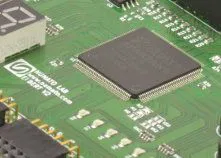Table of Contents:
What is an oscilloscope?
An oscilloscope is a device whose primary task is to measure and examine the so-called fast alternating electric current waveforms. This term covers all kinds of changes in voltage or current over time. The oscilloscope will also show all the moments when the voltage rises and falls, as well as enable automatic averaging of the obtained result.
In addition, a professional oscilloscope is also able to apply various mathematical functions, as a result of which the device can automatically show the power over time and the charge flowing through a given conductor over time.

All the data collected by the oscilloscope is then presented in graphical form on the device’s display, and a set of built-in manipulators allows the range of values tested to be changed. This makes a good quality oscilloscope suitable for analysing currents flowing through small electronic components, as well as through full-sized devices supplied with standard mains voltage.
The person using the oscilloscope sees an accurate line of the current waveform, regardless of its shape. Professional devices can interpret both direct current, sine wave, rectangular, triangular, sawtooth or any other voltage shape.
The oscilloscope is also a great tool for reading PWM signals, which allows it to be used to test and then decode the current value in the tested element. This functionality is used in many DIY projects based on Arduino family microcomputers. We also wrote about practical applications of oscilloscope in this article.
What can an oscilloscope be used for?

In a way, you could say that an oscilloscope reveals all the secrets hidden in a given piece of electronics. It shows how the individual components of a device work and how they are supplied with electricity.
Therefore, one of the most common applications for which an oscilloscope is used is the analysis of voltage amplitude – in particular peak-to-peak and RMS (Root Mean Square) values.
Oscyloskop pozwala także na badanie parametrów czasowych takich jak częstotliwość oraz faza pomiędzy dwoma poszczególnymi sygnałami elektrycznymi.
In which industries is the oscilloscope used?
Oscilloscopes are mainly used in specialised laboratories, design offices and electronics service stations. The users can diagnose problems with a given piece of equipment or check the compliance of its parameters with the manufacturer’s data.
Oscilloscope is also used by hobbyists, who can use it to debug their projects based on Arduino development boards or carry out simple servicing of home appliances.
Construction and functioning of the oscilloscope
An oscilloscope is a rather complex device which consists of many appropriately selected components. Depending on the manufacturer, there may be some discrepancies, but the vast majority of digital oscilloscopes are built in a similar way and work similarly.
The basic component is a conditioner, which is responsible for initial processing of obtained analogue data. Then, with the help of the ADC digital converter, the oscilloscope converts the data into a digital signal which goes to the memory block.


In the meantime, the oscilloscope also records time data, which makes it possible to calculate mathematical functions and show the course of the flowing current. Data processed in this way is then displayed on the screen of the device.
An analogue oscilloscope is a little simpler in construction; it does not have built-in internal memory and therefore the values it reads are displayed in real time using a special oscilloscope tube, which uses a cathode for its operation.
How useful was this post?
Click on a star to rate it!
Average rating 0 / 5. Vote count: 0
No votes so far! Be the first to rate this post.




















